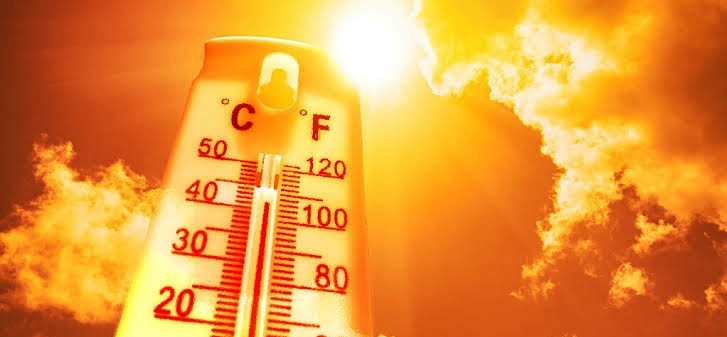By John Ikani
With temperatures spiking well above the usual averages, scientists are stressing the urgent need for world leaders to tackle the emission of planet-warming greenhouse gases.
They are set to convene in Dubai for the UNCOP28 climate conference this month.
In October, certain regions of the United States and Mexico suffered from drought, while many parts of the world experienced wetter conditions, often linked to storms and cyclones, according to the EU’s Copernicus Climate Change Service (C3S).
Sea surface temperatures reached unprecedented levels for the month, a consequence of global warming that intensifies and worsens storms, as noted by scientists.
Samantha Burgess, C3S Deputy Director, pointed out, “October 2023 has witnessed exceptional temperature anomalies, following four consecutive months of breaking global temperature records. It’s almost certain that 2023 will go down as the warmest year on record, currently standing at 1.43 degrees Celsius above the preindustrial average. The need for ambitious climate action at COP28 is higher than ever.”
The historic Paris Agreement saw nearly 200 countries commit to limiting global warming to below two degrees Celsius compared to pre-industrial times, ideally aiming for a safer 1.5 degrees Celsius.
These temperature goals are measured as an average over several decades, not just within a single year.
This year marked the onset of a warming El Nino weather phenomenon, expected to have more significant impacts toward the end of 2023 and into the following year, warming waters in the southern Pacific and causing hotter weather.
Copernicus reported that October was 1.7 degrees Celsius warmer than the estimated October average during the preindustrial era. Since January, global average temperatures have been the highest on record dating back to 1940, registering 1.43 degrees Celsius above the 1850-1900 pre-industrial average.
Beyond official records, scientists suggest that proxy data, such as tree rings and ice cores, indicates that this year’s temperatures could be unparalleled in human history, potentially the warmest in over 100,000 years.
Average sea surface temperatures for October, excluding polar regions, also hit all-time highs at 20.79 degrees Celsius. Oceans have absorbed 90 percent of the excess heat generated by human activity since the industrial age began.
Warmer oceans contribute to more intense storms and the melting of vital ice shelves supporting Greenland and Antarctica’s vast ice sheets, posing a significant threat of rising sea levels. A warmer atmosphere can hold more moisture, resulting in heavier rainfall.
Leaders attending the COP28 conference in the United Arab Emirates from November 30 to December 12 will need to address a scathing progress report on the world’s adherence to the Paris Agreement, as major scientific reports make it clear that the world is far from achieving its goals.
Carbon emissions, largely from fossil fuels, continue to increase when they should be reduced by half this decade.
Just a rise of under 1.2 degrees Celsius above pre-industrial levels has triggered numerous destructive and costly weather extremes. Worldwide, people have experienced heatwaves and droughts this year, with severe flooding in the US, China, India, and elsewhere.
In Canada, record wildfires partly linked to climate change emitted more carbon dioxide than the country’s total 2021 greenhouse gas emissions, as revealed by a “State of the Climate” report published by a group of prominent scientists last month. The report cautioned that humanity had entered “uncharted territory” with warming that jeopardizes life on Earth.
Lead author William Ripple, a professor at Oregon State University, stated that it’s likely that annual average temperatures will soon surpass 1.5 degrees Celsius.
He warned, “As warming continues, we face increasing danger from amplifying climate feedback loops and tipping points, such as ice sheet melting and forest dieback, which, once crossed, may change our climate in ways that are hard or impossible to reverse.”



































